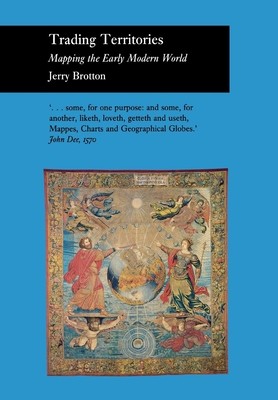
- We will send in 10–14 business days.
- Author: Jerry Brotton
- Publisher: Cornell University Press
- ISBN-10: 0801434998
- ISBN-13: 9780801434990
- Format: 16.4 x 24.2 x 2.2 cm, hardcover
- Language: English
- SAVE -10% with code: EXTRA
Reviews
Description
In this generously illustrated book, Jerry Brotton documents the dramatic changes in the nature of geographical representation which took place during the sixteenth century, explaining how much they convey about the transformation of European culture at the end of the early modern era. He examines the age's fascination with maps, charts, and globes as both texts and artifacts that provided their owners with a promise of gain, be it intellectual, political, or financial. From the Middle Ages through most of the sixteenth century, Brotton argues, mapmakers deliberately exploited the partial, often conflicting accounts of geographically distant territories to create imaginary worlds. As long as the lands remained inaccessible, these maps and globes were politically compelling. They bolstered the authority of the imperial patrons who employed the geographers and integrated their creations into ever more grandiose rhetorics of expansion. As the century progressed, however, geographers increasingly owed allegiance to the administrators of vast joint-stock companies that sought to exploit faraway lands and required the systematic mapping of commercially strategic territories. By the beginning of the seventeenth century, maps had begun to serve instead as scientific guides, defining objectively valid images of the world.
EXTRA 10 % discount with code: EXTRA
The promotion ends in 18d.07:36:27
The discount code is valid when purchasing from 10 €. Discounts do not stack.
- Author: Jerry Brotton
- Publisher: Cornell University Press
- ISBN-10: 0801434998
- ISBN-13: 9780801434990
- Format: 16.4 x 24.2 x 2.2 cm, hardcover
- Language: English English
In this generously illustrated book, Jerry Brotton documents the dramatic changes in the nature of geographical representation which took place during the sixteenth century, explaining how much they convey about the transformation of European culture at the end of the early modern era. He examines the age's fascination with maps, charts, and globes as both texts and artifacts that provided their owners with a promise of gain, be it intellectual, political, or financial. From the Middle Ages through most of the sixteenth century, Brotton argues, mapmakers deliberately exploited the partial, often conflicting accounts of geographically distant territories to create imaginary worlds. As long as the lands remained inaccessible, these maps and globes were politically compelling. They bolstered the authority of the imperial patrons who employed the geographers and integrated their creations into ever more grandiose rhetorics of expansion. As the century progressed, however, geographers increasingly owed allegiance to the administrators of vast joint-stock companies that sought to exploit faraway lands and required the systematic mapping of commercially strategic territories. By the beginning of the seventeenth century, maps had begun to serve instead as scientific guides, defining objectively valid images of the world.


Reviews